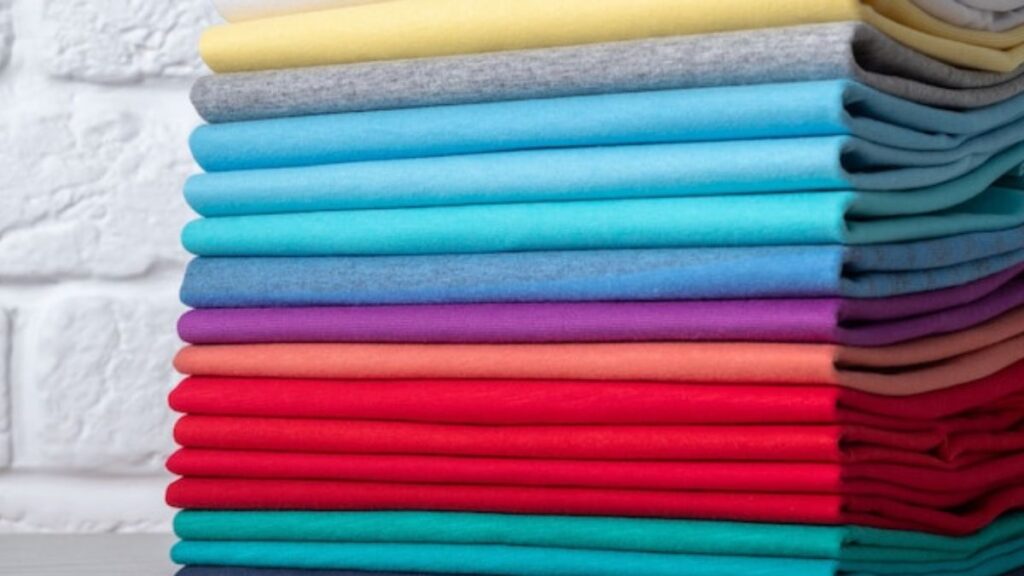Quick-drying fabrics are essential for activewear because they can keep you cool and comfortable during intense exercise. These fabrics also help you avoid odors by controlling bacteria growth and allowing your skin to breathe.
Quick-dry fabrics have a hydrophobic nature that repels water. This allows the fabric to absorb sweat and speed up its natural evaporation process.
Polyester
Polyester is one of the most common fabrics used in activewear. It is a synthetic fabric, meaning it is made from artificial materials rather than natural fibers like cotton and wool. It is also the fastest-drying synthetic fiber available. Garments from this material will go from wet to dry in less than 30 minutes and can be completely dried within two hours. In addition to its quick-drying properties, polyester is antimicrobial and antibacterial. Modern manufacturers ensure these qualities are maintained through at least 20 washes.
The first polyester garments to come onto the market were nylon stockings and drip-dry shirts that liberated homemakers from the chore of ironing. These innovations were a response to a post-war consumer who was hungry for change and comfort. Polyester offered several designer fiber attributes that appealed to this consumer, including ease of care, resistance to crease and wear, and quick drying.
These properties made polyester popular for sportswear. It dries quickly, wicks moisture away from the skin, and regulates body temperature. It is durable, comfortable, and easily transitions from sportswear to daily wear. It can even be woven with other textiles, such as spandex, to enhance its elasticity and stretch. High-performance fabrics help activewear brands like Lycra and retailers meet the increasing demand for supple garments that can follow the body’s every move. Its fabric standards support various sports apparel applications, including compression and shaping. However, despite all these benefits, polyester has its downsides. It can be more prone to odor than other fabrics, and some people may be sensitive to it.
Nylon
Nylon is a popular fabric for activewear because it is quick-drying, meaning it can be washed and worn without waiting to air dry. Due to its hydrophobic properties, water beads up and rolls off the fabric rather than absorbing it. This contrasts with natural fabrics like cotton, which takes longer to dry.
Nylon is also durable and wrinkle-resistant, making it a great option for workout clothes you plan to wear frequently. In addition, nylon is mold- and mildew-resistant and stretchy, which makes it ideal for activewear that requires much movement. It can also retain warmth, which is useful for cold-weather workouts.
The science behind nylon is that it is a thermoplastic polymer made from carbon-based molecules called monomers. The main monomer in nylon production is hexamethylenediamine, extracted from crude oil. Nylon has a polar backbone, which causes it to form multiple hydrogen bonds with adjacent molecules. This gives it a high level of crystallinity.
Nylon is often blended with other natural and synthetic fabrics to create different types of clothing. For example, it is sometimes combined with cotton to produce a more lightweight, breathable fabric. It is also often used with polyester to create spandex, a stretchy material known for its elasticity and quick-drying properties.
Merino Wool
Merino wool is a natural, sustainable fabric that ticks many boxes when it comes to being a quick-drying base layer. It is made from the fleeces of sheep, which are renewable resources and do not require toxic synthetic chemicals during production. It is also biodegradable.
In addition to being soft and breathable, wool can store moisture in small air chambers between its crimped fibers. This helps to regulate temperature, keeping you warm in cold weather and cool in warmer temperatures. It can absorb 35% of its weight in sweat without feeling wet. Because of this, it is a great choice for all-season running, as it will keep you comfortable during double-digit miles in any weather.
Another advantage of wool is that it is naturally antimicrobial and resists daily odor. It can do this thanks to its natural odor-resisting properties from the scales on the surface of the fibers. In addition, it is incredibly elastic and will stretch with your body to provide the perfect fit.
However, it is important to note that while wool is a quick-drying fabric, it will wrinkle after wearing if not cared for properly. The fibers will lose alignment if the garment is exposed to heat and water. The good news is that there are several methods to speed up the drying process.
Bamboo
Bamboo is incredibly versatile and is used for a wide variety of purposes throughout East and Southeast Asia. Their stems provide timber for homes and rafts, their leaves serve as fodder for livestock, and their pulped fibers are made into high-quality paper. They also produce bamboo vinegar (pyroligneous acid), which is used for hundreds of treatments, including medicine, pesticides and cosmetics. The plant’s shoots are eaten raw and cooked in various Asian cuisines, and the bamboo plant is known for its antibacterial properties. Bamboo is also fast-growing, so the plant is a renewable resource for many applications.
Aside from being a great choice for eco-conscious consumers, bamboo is also naturally quick to dry due to its natural sweat-wicking and breathability properties. Bamboo fabric is extremely lightweight and breathable and can help keep athletes comfortable during workouts.
The quick-drying fabric many athletes wear is usually a blend of polyester and bamboo, making the garments quick-drying and soft. To ensure the fastest dry time, looking for a bamboo mix with a tight weave is important. Loosely woven fabrics tend to hold onto moisture, so they will take longer to dry than tightly woven bamboo mixes. Opting for a bamboo fabric mercerized using natural enzymes is the most sustainable option, as it produces fewer harsh chemicals.







